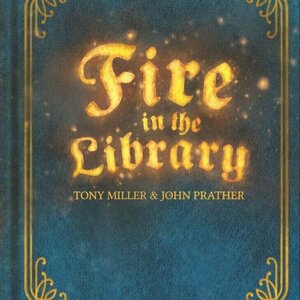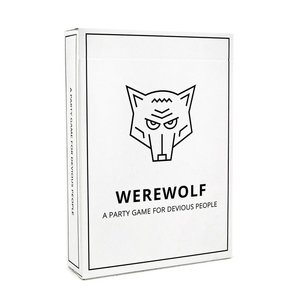
iPeng 9 - Squeezebox Remote
Music and Utilities
App
iPeng 9, the music remote for the Logitech® Squeezebox™, has been designed for the latest iOS...
Purple Phoenix Games (2266 KP) rated Fire in the Library in Tabletop Games
Feb 11, 2020
Fire in the Library is a push-your-luck card game that rewards players for pushing their luck well beyond their comfort zones… but as with all push-your-luck games, defeat is also imminent.
DISCLAIMER: We were provided a copy of this game for the purposes of this review. This is a retail copy of the game, so what you see in these photos is exactly what would be received in your box. I do not intend to cover every single rule included in the rulebook, but will describe the overall game flow and major rule set so that our readers may get a sense of how the game plays. For more in depth rules, you may purchase a copy online or from your FLGS. -T
To setup, each player will choose a player color, place their Libreeple (I think it’s Libreeple anyway) near the scoring track, and take the corresponding Player Reference Card. The Library will next be built from sequential Library Cards. The Library is a group of individual decks of cards arranged in a 2×2 pattern, and the card fronts create a lovely picture of the Library. Add all cubes of five different colors to the Library Bag (keeping aside 10 red “fire” cubes). Shuffle the Tool Cards deck, deal each player two Tool Cards, place the top three Tool Cards face-up next to its deck to form the Tool Card Market. Shuffle the Turn Order Cards per the player count rules in the rulebook, deal one to each player, and the game can begin!
Phase One of the game is Choosing Turn Order. Once the turn order has been established (just for the first round – after that, the player who is in last place will choose which Turn Order Card they would like to use for the round) the 1st Player will move onto Phase Two. Yes, Choosing Turn Order is an entire phase by itself. This becomes more important once I explain Tool Cards a little later.
Phase Two is the meat of the game. It is split into two sections, but they flow so nicely into each other. The active player consults their Turn Order Card to understand how many book cubes they would like to pull from the bag, thus “saving” them from the impending fire. The Turn Order Cards will have blank square spaces for “safe” areas, and spaces with fire icons in “risky” spaces. More points can be scored by placing cubes into the risky spaces, but also is more dangerous. You see, a player can pull out a red fire cube from the bag and still choose to continue to pull cubes, assuming the red cube is placed on a safe space on their card. But pull a second fire cube and their turn is immediately over. However, pulling just one red cube and having to place it in a risky space ends the turn immediately. A player can choose to stop pulling cubes at any time and earn the rewards on the Turn Order Card printed directly below the last cube placed as well as the points for each book saved, which are the large numbers printed on the Library Cards (the 2×2 grid with the picture of the Library). These rewards from the Turn Order Card could be merely a Tool Card (under safe spaces), or it could result in points on the scoreboard (under risky spaces). Even if a player busts with the red cubes, they will be able to take a Tool Card as consolation. If the active player did not bust and voluntarily stopped pulling cubes, they add their points for the turn and adjust their Libreeple accordingly. On the other hand, if a player had to end their turn due to pulling red fire cubes, then the fire spreads!
When the Fire Spreads all the books that the active player had thought they saved are burned (returned to the bag). These lost books will also cause the fire to burn down portions of the Library that match the colors of the cubes pulled. Remove the top cards for each of these cubes from the Library. Sometimes this will reveal a printed fire icon on the revealed Library cards. Every time a fire icon is revealed in this way, one of the red cubes that was set aside at setup will be added to the Library Bag – thus increasing the ratio of fire to safe books in the bag.
Phase Three is called “After Scoring.” Every Tool Card in the deck will have an icon printed to show when it can be played during a turn (check the Reference Card). The Tool Cards can be played during Choosing Turn Order, Saving Books, Fire Spreading, and After Scoring.
Once all players have had their turn for the round, a portion of the Library will burn. Remove the appropriate card (according to the rulebook). All players will have a chance to discard one of their Tool Cards and replace it with a Tool Card from the top of the deck. When complete, a new round begins. Play continues in this fashion until a section of the Library is revealed with an icon signifying the end of the game. Players will have one last round to earn as many points as— I mean, save as many books as they can.
Components. There’s a lot going on in this game, and the components are really really good. First, the game box is one of those awesome magnetic boxes (like Biblios) that unfolds and reveals the score tracker. The Libreeples are normal meeple fare, the cubes are normal cube fare, and the Library Bag is one that is loved by Guy Fieri (probably). The cards are great quality and feature really amazing artwork by Katie Khau and Beth Sobel. Overall, the components are wonderful and we really enjoyed playing with them.
As you can tell from our score, we genuinely enjoyed this game. The push-your-luck mechanic is so central to the game and the Tool Cards help to mitigate frustrating pulls, or help to manipulate other areas of the game, and we love both of those aspects. All in all, Fire in the Library is a truly enjoyable experience, and one that I find myself thinking about outside of game night. I cannot wait to play again, and hopefully save more books. I would suggest adding this to my workplace library’s board game collection, but I don’t want any students getting any great ideas… Purple Phoenix Games gives this one a hot hot hot 15 / 18. Check it out for a different take on push-your-luck, where you actually care about what you’re doing. Oh, and of course I won – I work in a college library.
Purple Phoenix Games (2266 KP) rated Posthuman in Tabletop Games
Aug 25, 2021
Posthuman is set in that dark post-apocalyptic horrorscape and is an exploration adventure game with character upgrading and dice-driven combat. The twist here is that humans are trying to escape the mutant creatures to The Fortress, a safe haven for all, but once infected may turn mutant and also turn on the party to prevent that glorious end. In this review, however, I will be playing through the solo rules, and they do not have players turning into mutants during the game. Bummer, eh?
DISCLAIMER: We are using the Kickstarter Deluxe version of the game. We do have the Defiant expansion from the KS campaign, but will not be using it for this review (I don’t think). Also, we do not intend to cover every single rule included in the rule book, but will describe the overall game flow and major rule set so that our readers may get a sense of how the game plays. For more in depth rules, you may purchase a copy from the publisher directly or from your FLGS. -T
To setup consult the rulebook, as there are so many decks of cards and character setup steps that need to happen that I just cannot detail here. Once setup your play area will look something like the photo below. Once setup is complete you are ready to begin your journey to The Fortress.
Posthuman is played over a series of rounds until the player wins or loses. The only way to win is to enter The Fortress before the Event deck runs out, and obviously the only way to lose is to run the Event deck out of cards or become a mutant by suffering five scars.
A round consists of several phases. The first phase is Event Resolution. The player will flip the top Event card and resolve its text. These Events could be a one-shot bad (or good) thing for the player, or may be an ongoing Seasonal Event that will stay in play until another Seasonal Event is drawn.
After the Events, characters will need to Eat to survive. Characters will be able to forage for food in a subsequent phase, but know that food is very important and if characters go too long without eating they will be suffering penalties of their Health and Morale.
Once fed (or starved, I suppose), the player will Declare an Action from the following: Camp, Forage, Scout, or Move (in multiplayer there is an additional action as well). To Camp players will forego any other action to heal their character. When a character Forages they will flip the current tile’s marker to show it may no longer be foraged and draw a Supplies card to see what supplies they will be able to gather. These could be more food tokens, ammo, equipment or weapons. To Scout a character will draw terrain tiles equal to the number of exits shown on their current terrain tile. The player will place the tiles however they want and this will provide insight into future locations and what they may hold. Lastly a player may Move into a connected terrain tile and begin having encounters upon it.
Most of the action in Posthuman comes as a result of having encounters on terrain tiles. Depending on where the character meeple is located on the Central Board track encounters will be drawn from the level one, two, or three decks and encountered immediately. Most of the encounters are combats, and I could write another whole post on combat, but I will spare you the details and merely say that combat is very involved and encompasses many steps to resolve. At the end of the combat a character may receive the encountered creature card as a VP trophy to be spent later on upgrades. The VP card may also instruct the player to move the meeple one space closer to The Fortress on the Central Board track. The other type of encounter card presents choices for the player to make or stat tests to overcome via die rolls.
Play continues in this fashion until the player wins by reaching The Fortress, or by losing to the forces set against them.
Components. This box is chock FULL of components and they are all super high-quality and enjoyable to play with. I do have a couple issues with some bits. Firstly, the player boards are quite small, and the tracking cubes are not meant for big meaty paws at all. Similarly, the tracking chits to be used for stats on the player board are flimsy and don’t really stay in place too well. Also the game comes with two different shades of gray player meeple colors and NOT a purple option. Shame! Shame! Shame!
When all is said and done Posthuman delivers an exciting experience on the table for a solo player and indulges the player’s need to roll dice on the regular. Just me? Didn’t think so. The combat is great, but I found myself discarding more enemies than defeating in some games and that is quite annoying. One game I refused to Scout at all and that totally bit me in the booty. So Scout, y’all.
Just know that playing this solo is NOT a cakewalk at all. I watched a playthrough video where the host won the game but nearly every roll of the die was favorable and every combat successful. Even still, she nearly ran out of time and lost the game. So games really can come down to the wire. Now, I haven’t really gotten very close to winning yet, but my day is coming!
I like this one a lot, and will certainly be going back to it for my solo plays. I have been playing some really great solo games lately, and I am very thankful for that. Posthuman, however, I don’t think will get much multiplayer action at my house. The rules are plentiful and the people I normally game with do not enjoy rules-heavy games. Similarly, I don’t think the theme is for everyone. I dig it, but different strokes and all. If you are in the market for a new (to you) game that can be played solo or multiplayer with an interesting theme and is pretty difficult, look up Posthuman. Just stay away from the mutants. These do NOT want to recruit you to their school for gifted people.

Unlimited Music Player: MP3 Streamer & Songs Album
Music and Entertainment
App
It is a must download app if you want to enjoy your favorite music and get the ultimate music...

Spanish League - Soccer Live Scores
Sports and Entertainment
App
The perfect application to keep update all the news of the Spanish league, with the most outstanding...
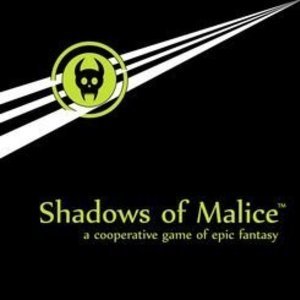
Shadows of Malice
Tabletop Game
Shadows of Malice is a cooperative game in which 1-8 player(s) work to unseal hidden Wells of Light...
Purple Phoenix Games (2266 KP) rated Werewolf: A Party Game for Devious People in Tabletop Games
Jun 24, 2021
Disclaimer: We were provided with a copy of this game for the purposes for this review. What you see is a finalized production copy, and is what would be received in a retail copy. -L
Werewolf: A Party Game for Devious People (simply referred to as Werewolf from here on out), is a game of bluffing and deduction in which players are attempting to complete their objective, based on their secret roles. Werewolves are trying to outnumber the Villagers, and Villagers are trying to kill all the Werewolves. To setup for a game, assemble the deck of role cards. Each deck will always have 1 Moderator card, a number of Werewolf cards, and a number of Villager cards depended on the player count. For example, a 5-player game would have 1 Moderator, 1 Werewolf, and 3 Villagers. Each player is dealt one card and keeps their role a secret, except the Moderator. The game is now ready to begin.
Each round consists of a Night and Day phase, all facilitated by the Moderator. To start the Night phase, all players (except for the Moderator) will close their eyes. The Moderator prompts the Werewolf to awaken (open eyes) and silently point to a Villager to kill. The Werewolf then closes their eyes, and the Night phase ends. To start the Day phase, the Moderator will have all players open their eyes, and will reveal which player has been killed in the night. All remaining ‘living’ players now have a chance to discuss amongst themselves and try to figure out the identity of the Werewolf. Accused players have a chance to defend themselves, and may even throw the blame to other players. Once players reach a consensus, they will kill off the accused Werewolf. If the accused player was the Werewolf, then the Villagers win (in a 5-player game)! If the accused player was not the Werewolf, then a new round begins with a Night phase, and the Werewolf is one step closer to winning. The game ends when either the Villagers have killed the Werewolf, or the Werewolf equals or outnumbers the Villagers.
The above description is a generic rundown of the game. Many versions of Werewolf have additional roles/abilities to enhance the gameplay and add new elements to the strategy. This particular version of Werewolf does indeed include optional additional roles. Those roles are: Seer, Doctor, Drunk, Witch, and Alpha Werewolf. These optional roles grant players additional abilities/powers for use during play. For example, every Night phase, the Seer can silently ask the Moderator whether a single player is a Werewolf or not. That can definitely help in the Day phase when it is time to accuse people! The addition of these roles helps to enhance the strategic gameplay by offering more for players to do, rather than just blindly accuse and guess each round. Included in the tuck box are even some blank role cards for you to create your own roles/powers if you so choose.
The major downside to any version of Werewolf is that once a player has been killed off, if they were not the Werewolf, they are out of the game for good. So even if the game lasts for 20 more minutes, that player just has to sit there in silence.
Components. This particular Werewolf consists of a deck of role cards, rules, and a guide for the Moderator. The quality of the cards is nice, and they are easy to manipulate and are sturdy. The artwork is very minimalistic in this game, and it actually works pretty well since Werewolf really isn’t a component-based game. All in all, a good quality deck of cards.
Overall, this is just a normal game of Werewolf. Honestly, you don’t really even need any components to play – as long as everyone knows the rules and roles, you are good to go. Does having a deck of cards help? In some ways, yes. But it kind of just feels redundant to me, since I already knew how to play the game. If you’re wanting to introduce someone to the Werewolf-type game, this little deck of cards would be a good way to do it. Personally, this type of game appealed to me more as a child/teen, and it kind of falls flat to me now as an adult, thus my low score. I don’t see this game staying in my collection forever, but it had a decent run while it was here. Purple Phoenix Games gives it a calculated 4 / 12. If you’ve played any variation of Werewolf before, there’s really no need to check out this particular iteration.
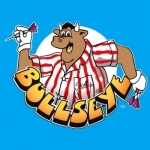
Bullseye - TV Gameshow and Darts
Games and Entertainment
App
*************************************************** * Bullseye - The Official Gameshow App * ...
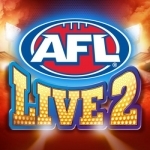
AFL LIVE 2
Games and Sports
App
Lead your team to Premiership glory in the most realistic AFL experience on iPhone and iPad. Play...
